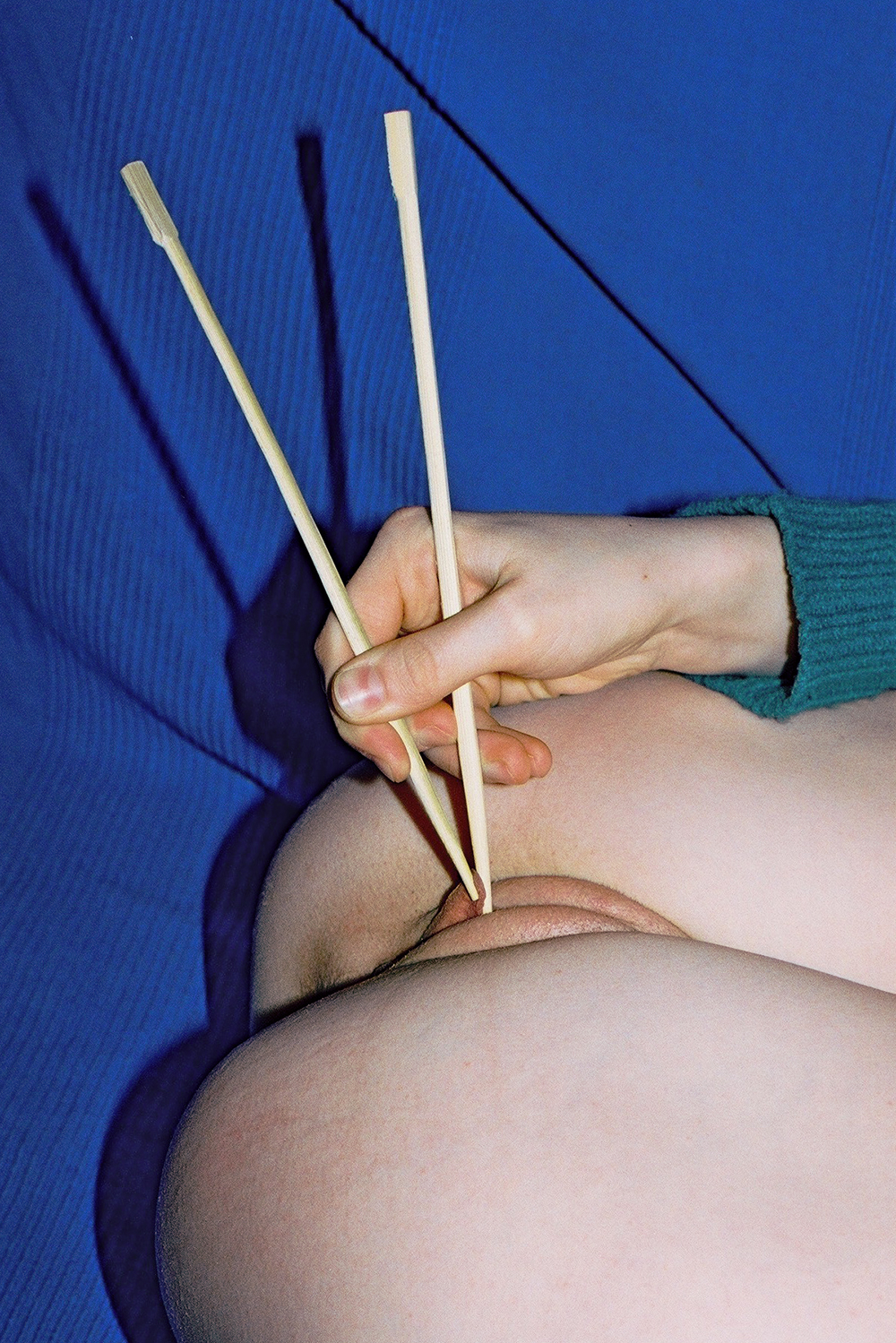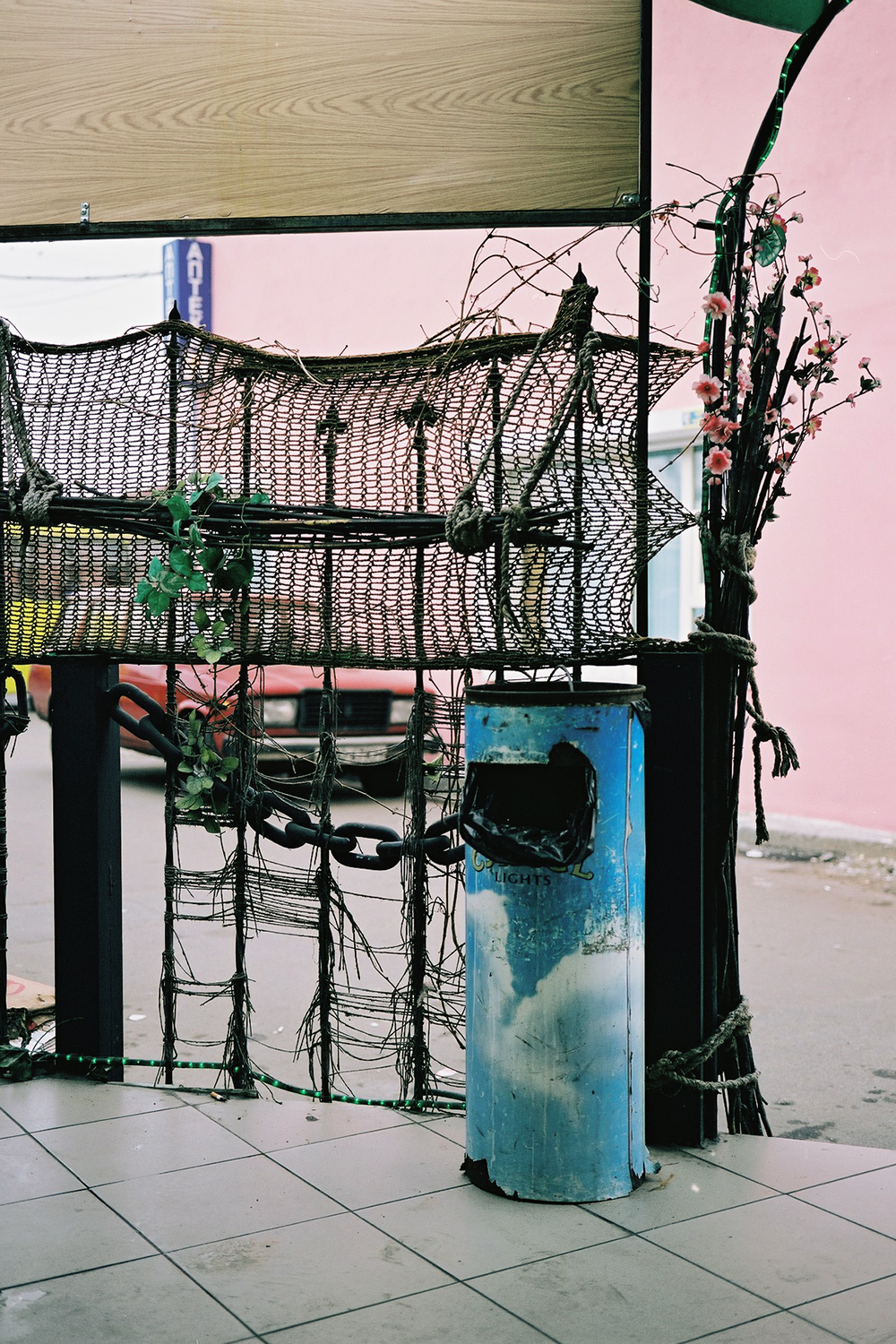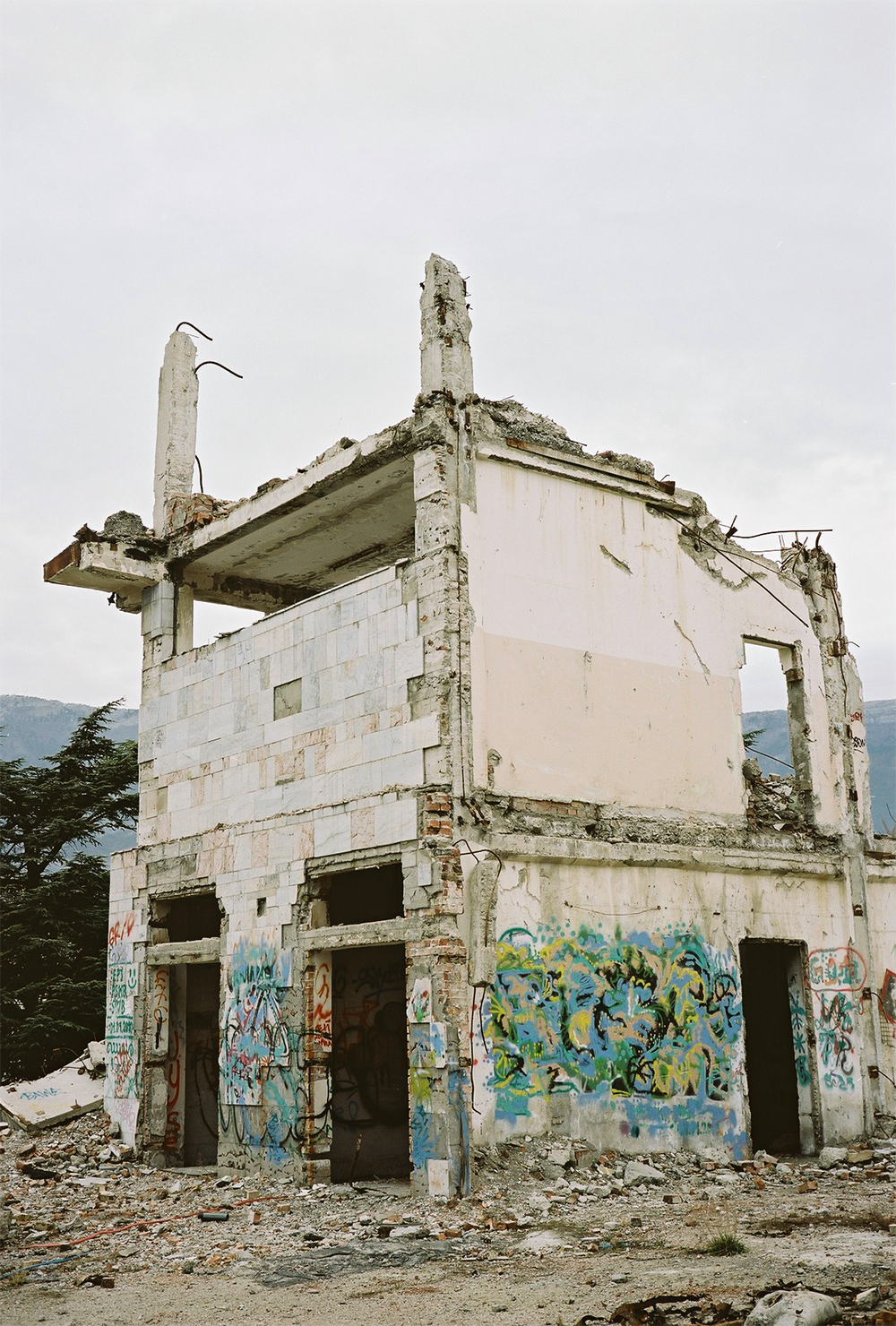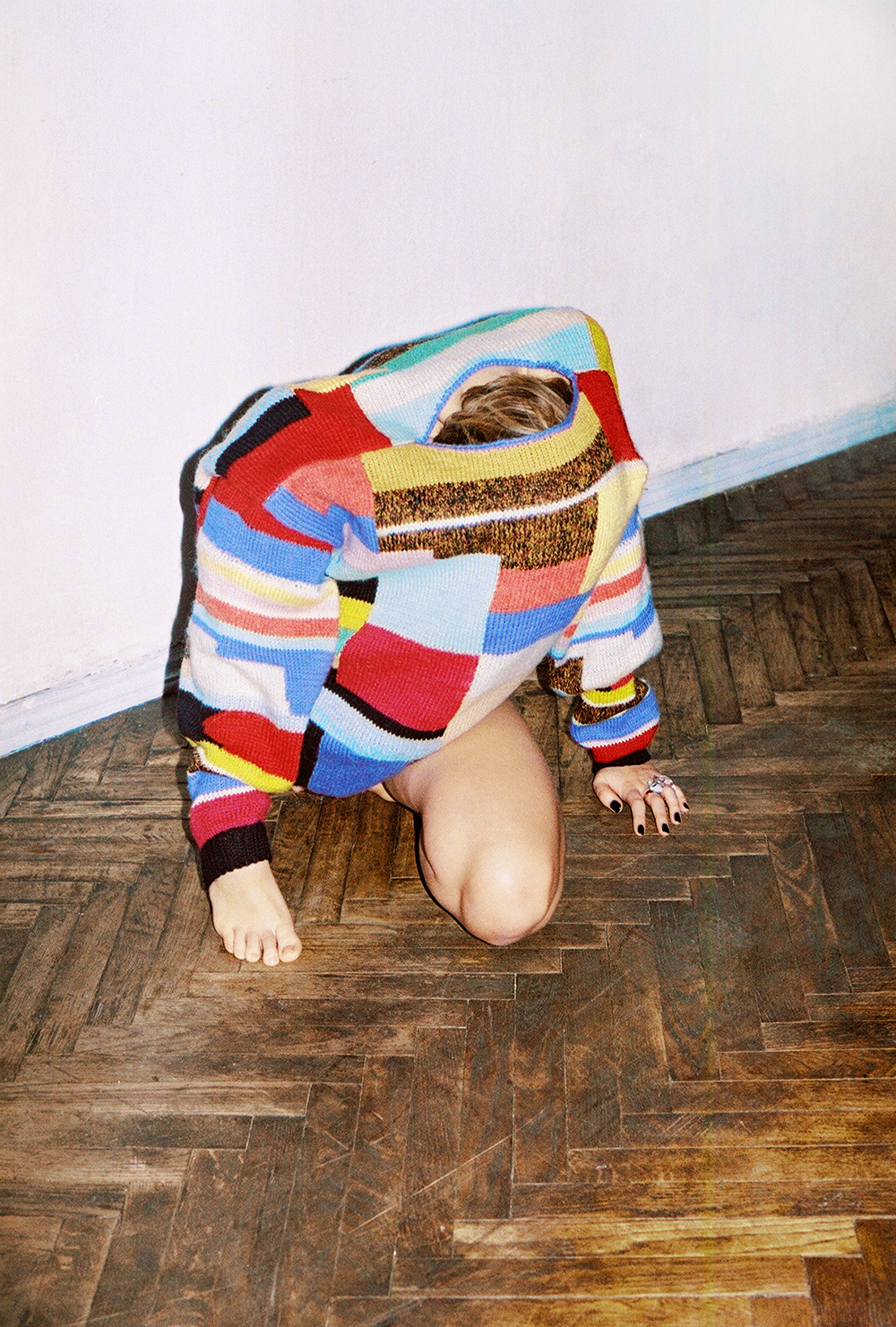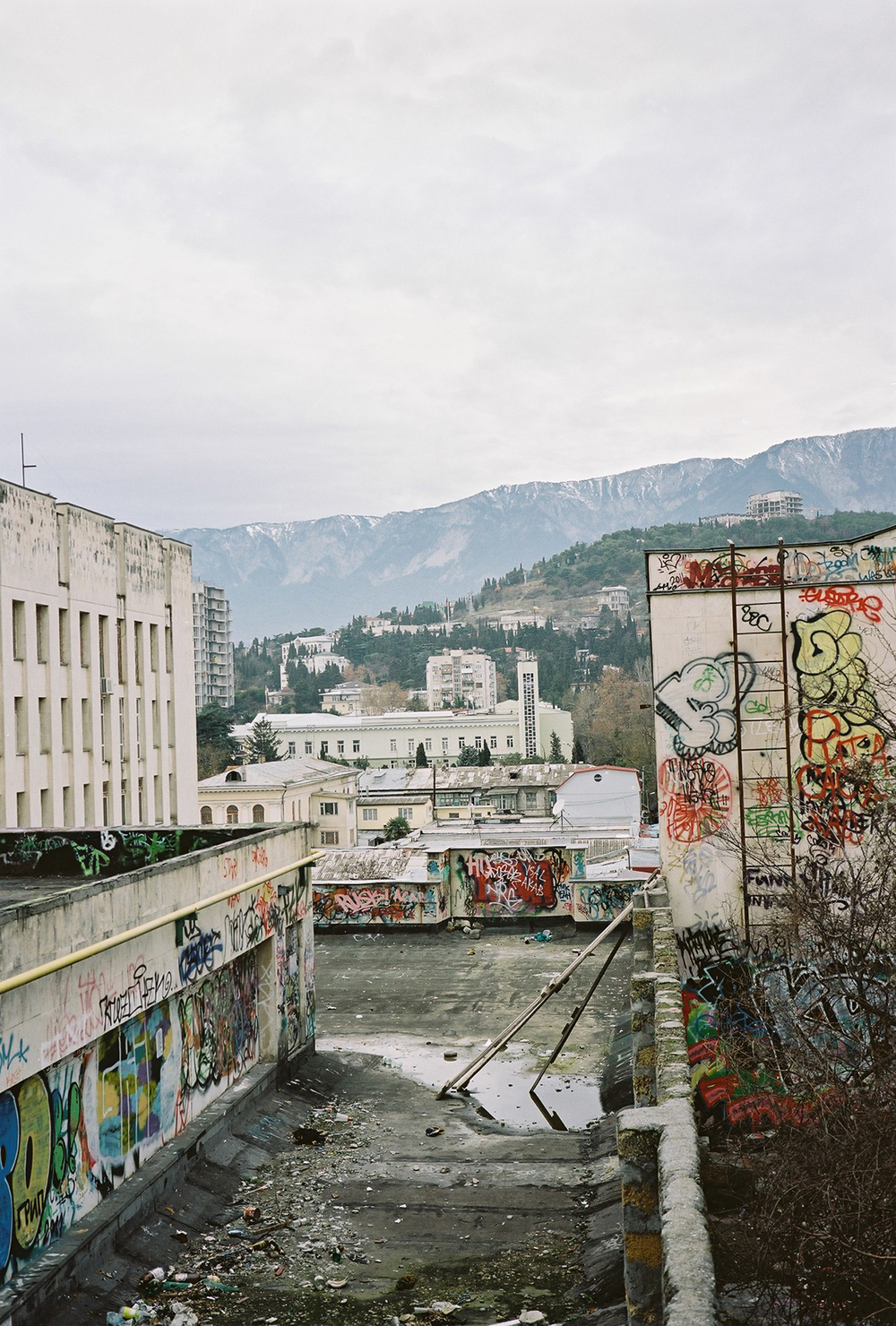Artist Blog
Every week an artist whose single image was published by Der Greif is given a platform in which to blog about contemporary photography.
Sasha Kurmaz – Concrete and Sex
Jan 14, 2015 - Robin Hinsch
Let me introduce you to Sasha Kurmaz and his work "Concrete and Sex". more Information on: http://www.sashakurmaz.com »Dual Process« In asking me to write this foreword, Sasha was clear about what he had in mind: »Just look at what’s there,« he told me, »and respond to it - just explain how you feel about it, there’s no need to be too fancy.« Judging from the work collected in this book, it occurs to me that he might favor a similarly direct approach in his photography. So many of Sasha’s choices here, from the work’s intimate content to its snapshot aesthetic, seem aimed at achieving immediate, unflinching results; while the images range from the provocative to the pensive, one senses throughout these pages a familiar, forthright, and often physical connection between the artist and his subjects. Concrete and Sex, Sasha’s third publication, is broadly structured around what has become a common motif in his work: the juxtaposition of nude snapshots against the post-industrial, post-Soviet architecture of Kiev, Ukraine. On one hand, it’s impossible to ignore the political implications of this approach - as in so much of his output, one finds here the blunt advocacy of sex, vandalism, and, of course, artistic expression as meaningful responses to repressive conditions, and it doesn’t feel like a stretch to view this work, at least partially, as a comment on the status of the individual (whose identity within these pages is repeatedly (and tellingly) obscured by anonymity and/or physical distortion) within the broader mechanisms of public ideology and fading history. My sense, however, is that Sasha’s interest tends to lie more in exploring the personal than the blatantly political. For one thing, an artist generally does not use his closest friends and hometown as subjects without some interest in examining his own relationships to each. What’s more, Sasha appears far too enamored with visual ambiguity to invest himself in delivering any overarching social commentary. His approach to shooting nudes, for instance, would seem to confirm as much: though often palpably sexual, the results are rarely “sexy,” favoring as they do awkward poses, unflattering crops, and the occasional prop designed to inject an element of humor that often borders on the bizarre. These aren’t the idealized nudes of classical sculpture or commercial photography: they are raw, unadorned depictions of the human form - the baring of which, as these images suggest, can be as potentially stirring, revealing, and complicated a prospect as any truly intimate relationship we’ll have in our lives.< So, with that said and as requested, I’ll conclude by listing a few of the things I think of as I make my way through Concrete and Sex: I think of facades, of the spaces that separate the external and internal, and the various strategies we use to keep certain elements unseen, whether it be the clothing that covers our bodies or the monuments that romanticize (and invariably misrepresent) our socio-political realities. I think of the body’s capacity to function as a sculptural object - a longstanding artistic tradition, certainly, but one which photographs like these extend through their capacity to incorporate elements of sculpture, performance, and two-dimensional representation simultaneously. Most of all, I think of how we as individuals are reflected in the things we create. Sasha has previously characterized his practice as an exercise in “self-study,” his photographs as a kind of approximated self-portraiture. It’s an important point to consider, for where some might be initially (and, I think, understandably) preoccupied with the aggressive tone of these images, understanding how they function in context – which is to say, as symbolic representations of the artist’s relationships to the people and places that surround him - almost certainly shifts one’s sense of the project at hand. Viewed in this light, we’re able to recognize the work as being sincere, direct, and above all, unapologetic, an earnest attempt to reconstruct the artist’s internal workings through external, thoroughly corporeal means. This, for me, is the most redeeming aspect of Concrete and Sex - and, indeed, of Sasha’s broader output: for in assessing work that seems to be so much about the photographer’s gaze – in this case, a distinctive, decidedly male gaze that aims to render its subjects both physically and figuratively naked - it is a remarkable thing to find that it’s ultimately the man behind the lens who has truly been exposed in the process. Christopher Schreck New York City March 2013


